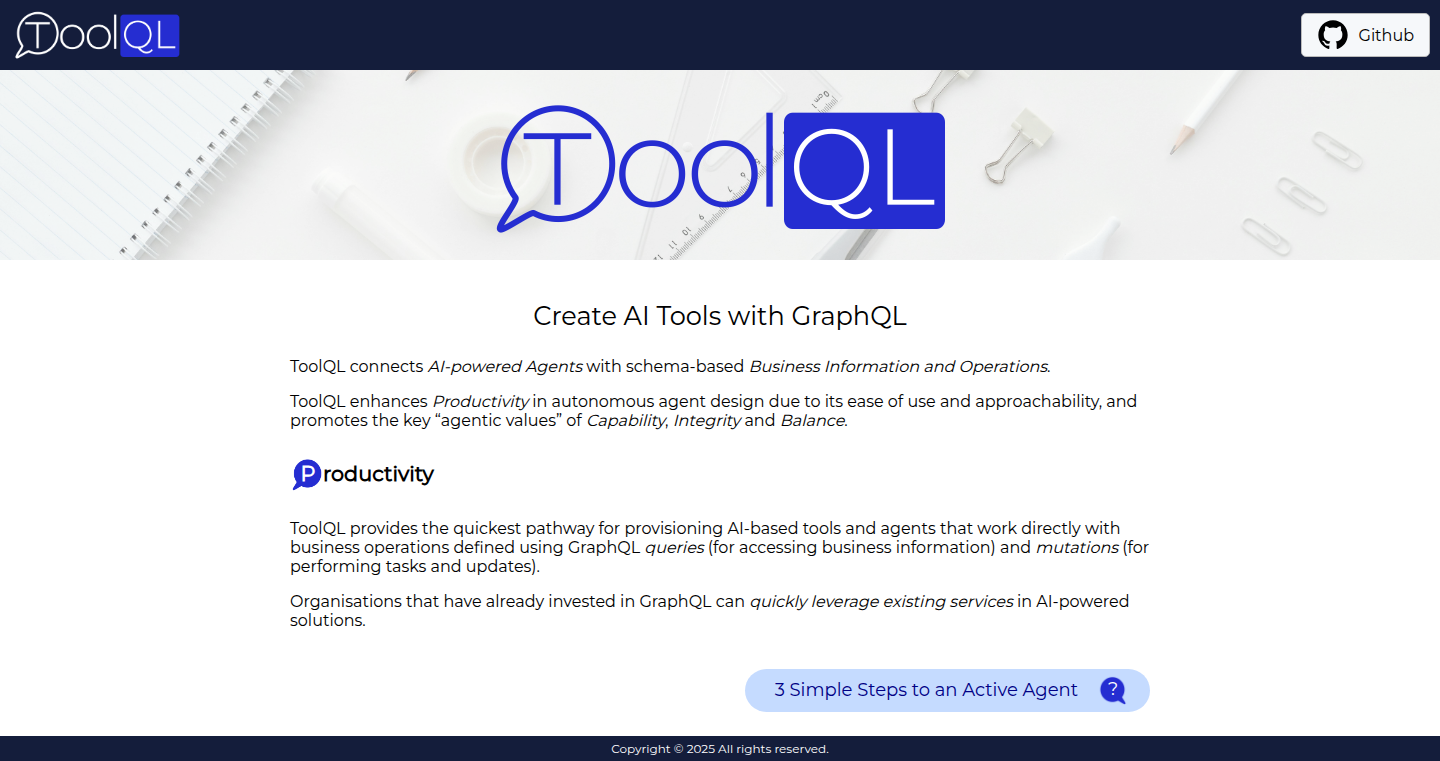

Highlight 1
ToolQL offers a streamlined setup process with just two necessary files, making it highly accessible for users.
Highlight 2
The ability to extend its functionality with LangChain and visual tools provides users with versatile options for enhancement.
Highlight 3
The active engagement from the developer with promises of updates and added features keeps the community involved and excited about future developments.

Improvement 1
As an early-stage product, documentation could be expanded to better support new users in getting started.
Improvement 2
Adding more in-depth examples and tutorials can improve user experience and help demonstrate the product's capabilities more clearly.
Improvement 3
An enhanced user interface could make the tool more visually appealing and easier to navigate for users of all technical backgrounds.
Product Functionality
Consider adding a more comprehensive onboarding process or wizard for new users to quickly understand the setup and usage of ToolQL.
UI & UX
Improving the UI/UX by implementing a more intuitive layout and smoother navigation can greatly enhance user satisfaction.
SEO or Marketing
Enhance SEO strategies by incorporating targeted keywords related to AI and GraphQL, and create high-quality content that outlines use cases and success stories.
MultiLanguage Support
Implement multi-language support to broaden the user base, making ToolQL accessible to non-English speaking users.
- 1
What is ToolQL used for?
ToolQL is used to enhance AI capabilities for organizations that utilize GraphQL, allowing them to easily set up AI agents.
- 2
Do I need programming knowledge to use ToolQL?
While some knowledge of GraphQL and configuration files (like .env and .graphql) is helpful, ToolQL is designed to be user-friendly and accessible even to those with minimal experience.
- 3
What features can I expect in future updates?
Future updates are expected to include enhanced features such as relay pagination, proxy authentication, and expanded documentation.
